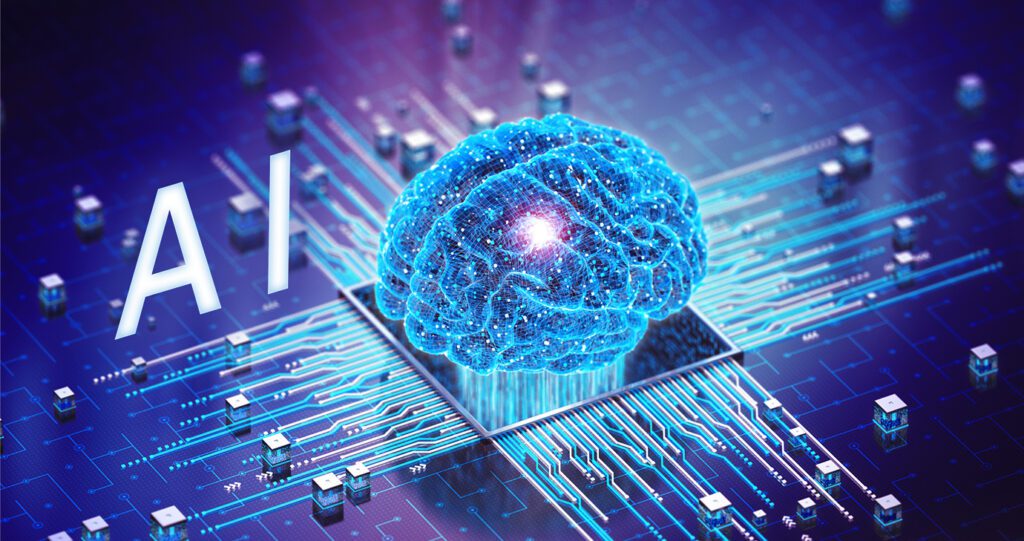- Why Aeris
-
What we offer
Our Platforms & SolutionsAeris Mobility Suite
-
Who we serve
Our Customers & PartnersConnected Industries
- Partner Ecosystem
- About
- Resources
- Login
Across all industries, organizations are leveraging smart technologies like artificial intelligence (AI) and machine learning (ML) to improve processes and cut down on time-consuming manual tasks. Adoption of these technologies has grown, with IBM reporting in 2022 that over one-third (35%) of surveyed companies are using AI in their businesses to some degree.
As organizations scale IoT rollouts and connect hundreds (or thousands) of devices to their networks, AI and ML are crucial to generating valuable insights, improving IoT security, and reducing manhours through automation. In fact, most companies — 79% according to Microsoft research from 2020 — that adopted IoT solutions leveraged AI as part of their IoT rollouts. Organizations not using these technologies in their IoT implementations not only risk leaving themselves vulnerable to security threats as intelligent technologies can detect malicious and abnormal device and network traffic. Additionally, AI and ML can provide users with vital insights around how their IoT solutions are performing.

3 Ways AI and ML Can Improve Your IoT Systems
As organizations begin leveraging IoT systems, here are three key benefits to implementing AI and ML into IoT programs.
Reporting and Security
One of the foundational benefits of AI and ML, at large, is improved reporting capabilities. Intelligent technologies collect vast mountains of data – like the ones often generated by IoT devices – and aggregate it into reports humans can readily understand and draw conclusions from.
For example, if a trucking company needs to understand the location and performance of the trucks in a fleet, AI collects that data and aggregates it in a report so decision-makers have insight into asset location and performance. The solutions can also analyze the data, signifying when a truck might need maintenance. With these insights, employees can draw conclusions from the data and take tangible actions according to the patterns and insights they draw from AI reporting.
In fact, many organizations using IoT believe AI and ML will be important for crucial IoT activities in the near future. According to Beecham Research’s recent Mass IoT Deployment study, 93% of respondents indicated that intelligent technologies will be either “very important” or “important” in the next three years for detecting and handling faults.
This functionality is particularly useful on the cybersecurity side of things. IoT networks represent security risks for organizations and their customers. Hackers and bad actors are finding new ways to gain access to IoT networks. According to Verizon, 31% of IoT users reported experiencing a system intrusion involving an IoT device. Given the scale IoT systems are often rolled out at – often hundreds of connected devices – these solutions are often an easy target for security breaches, including DDoS attacks, device mismanagement and misconfiguration, and information theft.
However, intelligent IoT networks with AI capabilities make detecting and halting these intrusions easier for organizations. Intelligent technologies give users deep visibility into device behavior and network activity, simplifying the process of identifying security breaches – among hundreds of connected devices – and taking action to mitigate the scale and scope of any intrusions. For example, intelligent technologies can detect rogue actors that most VPNs and APNs are likely to miss.
Prediction
Given the tectonic shifts such as supply chain disruptions, evolving consumer expectations, and altered working realities the last few years, it’s now all the more important that companies must know when specific events – like potential machine breakdowns – are going to happen well before they take place. Enter ML. Using the consistently-generated avalanche of data, ML technologies search for patterns and trends, effectively becoming “smarter” the longer they are leveraged.
Parsing the trends in the data, ML technologies can predict the future based on current and past data IoT devices generate. This enables organizations to plan ahead based on previous asset behavior. For example, if a manufacturing company knows one of its machines will likely experience a breakdown in the coming weeks based on previous maintenance and operations data, it can schedule machine upkeep during a period of low demand and mitigate the effect on plant operations.
Since machine behavior is generally highly predictable (certainly more so than the behavior of financial markets or humans), this data results in incredibly accurate predictive analytics, so organizations know they are not being led astray.
Automation and Reduction of Manhours
Building on predictive capabilities, AI and ML also enable organizations to save massive amounts of manhours through automation. This effectively frees employees across an enterprise from repetitive, time-consuming tasks, allowing them to focus on other business-critical work.
As AI and ML solutions learn from the patterns and trends generated by a company’s data and predict events, the solutions eventually can perform various actions automatically, without human intervention. For example, based on the previous data, an organization’s IoT system knows when connected devices are behaving normally – and abnormally. If the solution detects an aberration in a device, it can automatically shut it down, protecting the larger IoT system and all the organization’s connected devices. This action can be done quickly – as soon as the intelligent technologies detect something is amiss – as opposed to waiting for humans to see the abnormalities and taking delayed action.
Growing IoT Complexities
While creating intelligent IoT solutions imbued with AI and ML capabilities improves businesses’ security and performance, it does make rolling out IoT deployments considerably more complicated. That’s why it is so important to run IoT programs on networks that were specifically designed and built for IoT applications.


